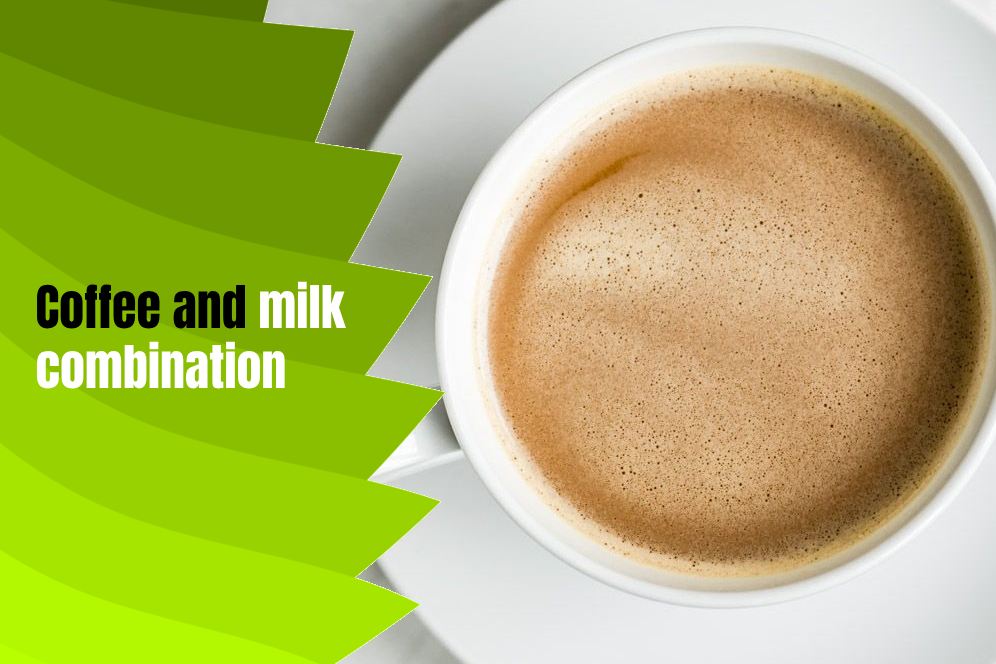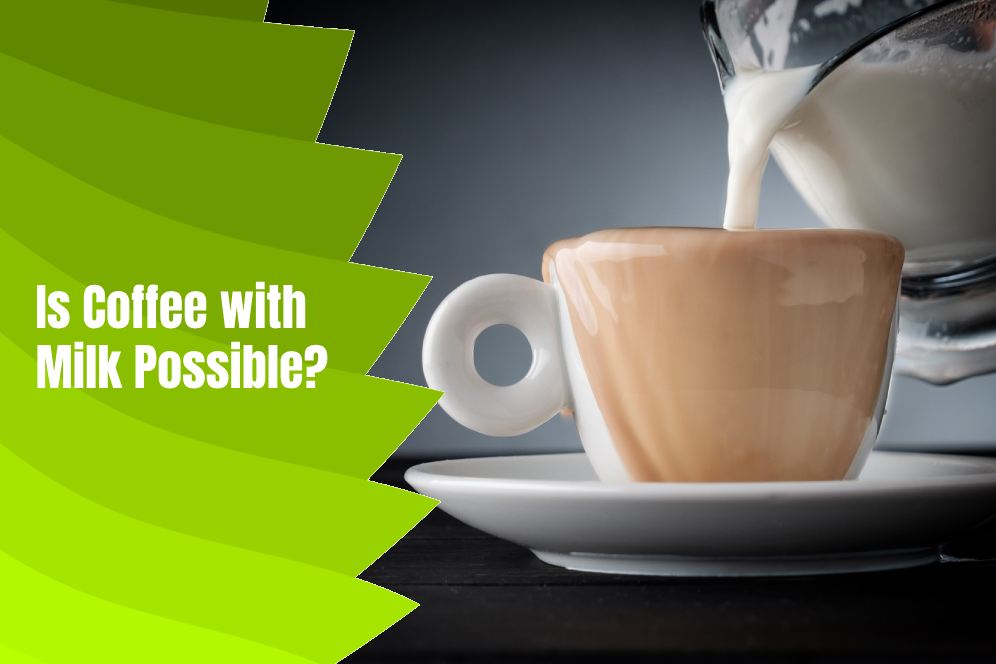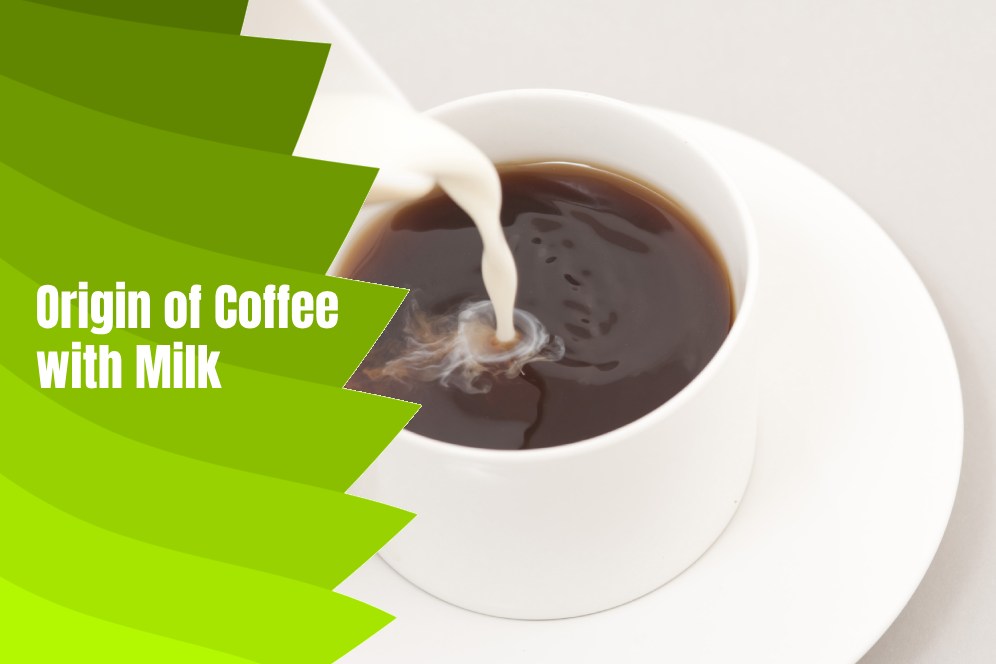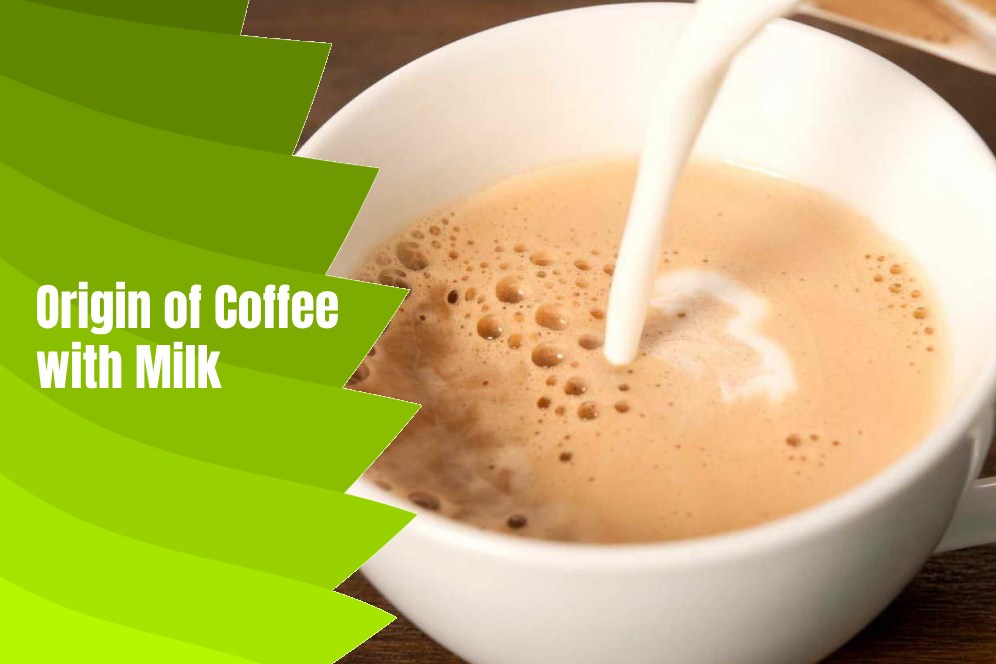Amazing Effects Of Coffee And Milk Combination
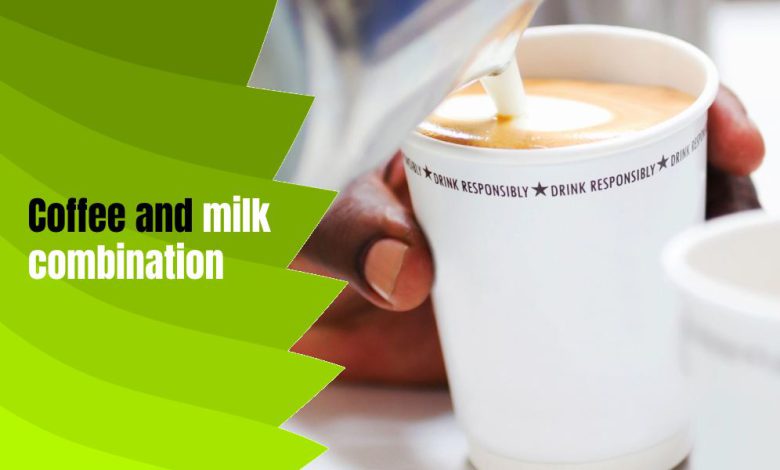
Coffee with milk is likely the most popular combination among coffee enthusiasts. In the birthplaces of coffee such as Ethiopia or the Arabian Peninsula, coffee with milk is a foreign concept. In these countries, coffee with sugar was traditionally consumed. Nowadays, the idea of life without the blend of coffee and milk is unthinkable. Whether as a cappuccino, a flat white, or a latte, coffee with milk is now present and more popular in all countries.
Coffee is one of the most beloved beverages among people. If you mix your coffee with milk, you will enjoy numerous benefits. We will tell you about the types of milk and how they are produced. We will also explain how the fat and protein content of milk can affect the taste of coffee.
Contents
- 1 Milk and coffee, are an unparalleled combination
- 2 Is Coffee with Milk Possible?
- 3 Origin of Coffee with Milk
- 4 Coffee and Milk – Progress in Europe, and Beyond!
- 5 Coffee with Milk – Cappuccino as a Successful Combination
- 6 Coffee with Milk – Development to Date
- 7 Research shows when to add milk to coffee
- 8 What has made coffee with milk so popular?
- 9 Make Your Latte at Home
- 10 Which Milk for Your Latte?
- 11 Café au Lait in France
- 12 What Has Contributed to the Popularity of Coffee with Milk?
- 13 Which Coffee Beans are Suitable for Coffee with Milk?
- 14 Conclusion
Milk and coffee, are an unparalleled combination
As mentioned earlier, coffee with milk was not typically found in countries where coffee originated. In Arab countries, coffee is purified with sugar. This type is now known as Turkish coffee or Mocha. In this method of preparation, a small pot filled with finely ground coffee is poured with water and brought to a boil on the stove. If desired, but optionally, sugar can also be added.
Is Coffee with Milk Possible?
For most people, especially during the early hours of the morning when enjoying cake, coffee is irreplaceable in social gatherings. However, opinions differ when it comes to preparing coffee: while some prefer to drink their coffee black, others mix it with a considerable amount of milk.
Since coffee often has a relatively bitter taste, many people like to mix it with milk. This helps neutralize the bitter notes, as the fat in the milk binds to the bitter acids in coffee beans, resulting in a milder taste. This imparts a smooth flavor and aroma to coffee mixed with milk.
Origin of Coffee with Milk
Now, let’s return to coffee with milk. While in Arab countries, Turkey, and the Balkans, people preferred to drink Mocha with sugar, in Europe, people were seeking a solution to balance the bitterness and acidity. Due to the lack of coffee knowledge at that time, improper cultivation, and less-than-ideal roasting, the taste of coffee back then differed significantly from what we know today.
In the seventeenth century, when the first cafes opened in Europe, it took some time for the first brave individual to dare to mix coffee with milk. Although dairy products like cheese and yogurt were previously very popular, the introduction of coffee with milk was somewhat hesitant. In the new coffee houses in Paris, coffee with milk managed to prevail. At that time, people used milk as a neutralizer, marking the beginning of the history of milk coffee.
Coffee and Milk – Progress in Europe, and Beyond!
The real advancement of coffee with milk in Europe occurred only in the 19th century, a time when the coffeehouse culture in Vienna truly flourished. Coffeehouses still invite you to linger for hours, and back then, they were places where artists, intellectuals, and writers would gather – as well as places where coffee and milk came together. Historical recipes like Kaiser Mélange or Kapuchiner served with a generous amount of cream, were prepared in these coffeehouses.
Coffee with Milk – Cappuccino as a Successful Combination
During World War I, Austrian soldiers brought the concept of cappuccino to Italy. In Italian, it transformed into Cappuccino, an abbreviation for the Italian word ‘hood’ – Cappucio. Italians then modified this preparation to create the cappuccino we know today, made with frothed milk. The first coffee with milk was born.
In the 1960s, when Germans discovered Italy as their holiday destination, this trend also spread to Germany. Previously, the coffee here was consumed black with sugar, but the taste of Italian coffee recipes with milk captivated them so much that they brought it home and happily embraced the serving of coffee with milk.
It was also the cappuccino that marked the beginning of the global triumph of coffee with milk. In the early 1990s, cappuccino was introduced as a specialty in coffee shops in the United States. People embraced this flavor, especially cappuccino, and carried it worldwide. Today, it is probably well-known to everyone.
Coffee with Milk – Development to Date
Even today, coffee with milk continues to evolve, but beloved classics like cappuccino, Viennese Melange, or French café au lait remain very popular. However, modern and new coffees with milk also enjoy great popularity. The Flat White, made from a double espresso and frothed milk, is increasingly becoming a trend and is now available in most cafes. Nonetheless, the Flat White comes from Australia and New Zealand, and we’ve been enjoying it there since the 1980s. Today, there are no restrictions on coffee with milk. From spiced pumpkin lattes to salted caramel cold brew, there are now various combinations… Some people love them, others not so much. At Wildkaffee Roastery, we prefer to focus on the natural taste of coffee and its diverse notes.
Research shows when to add milk to coffee
The Physics Department at Bielefeld University has examined the effects of adding milk to coffee immediately or waiting for a few minutes. The result was clear: if milk is added immediately to hot coffee, the entire drink stays warmer for a longer period. However, if the hot beverage can cool slightly before the addition of milk, adding milk five to ten minutes afterward cools the entire drink much faster.
What has made coffee with milk so popular?
Anyone who has only had coffee with a drop of cold milk, when they take the first sip of an excellent latte, will be amazed. A latte is made up of half coffee and half warm milk – the high proportion of milk ensures a pleasant sweetness in combination with a strong coffee. Many people also like their latte served in a bowl or a large cup, which is excellent for warming your hands. In comparison to a cappuccino with a capacity of approximately 180 milliliters, a 360-milliliter latte contains twice the amount of coffee in the mixture with milk. This is why, when enjoying a hearty breakfast with good friends on the weekend and savoring a large portion of cafes, lattes are very popular in coffee shops.
Make Your Latte at Home
To ensure the excellent taste of coffee with milk within your four walls, you’ll need the following coffee ingredients and accessories:
- Electric coffee grinder with a conical or disk grinder (e.g., Graef CM 800).
- Specialty coffee beans.
- Stovetop pot (such as an espresso maker, Moka pot, or Bialetti).
- Purified water.
- Fresh whole milk with 3.5% fat.
- Small pitcher.
Before preparing the coffee with milk, you should grind the coffee beans directly. We recommend a fine grind but not as fine as an espresso grinder; rather, slightly coarser. This means the coffee won’t have a bitter taste. Here are brief instructions on how to make espresso coffee that you will see here.
Of course, you can also use filtered coffee to make your coffee with milk. We recommend using darker roasted coffee for filtered coffee, where its acidity decreases. When choosing coffee beans, nutty and chocolatey flavors should be considered. These flavors harmonize wonderfully with the natural sweetness of warmed milk.
We can recommend this Arabica blend
You might also wonder whether, when making a latte, you should pour the milk or coffee into the cup first. Unlike a macchiato latte, you pour the coffee first into the cup, and then pour the warm milk into it.
Which Milk for Your Latte?
You can easily prepare a delicious latte within your own four walls. Here, you will find our step-by-step instructions for making an excellent latte.
Café au Lait in France
In France, coffee with milk (café au lait) is always served for breakfast alongside a baguette. The French enjoy their coffee from a handle-less bowl large enough to dunk a piece of baguette into. As evident, baguette is not considered a national dish in Germany, but café au lait is becoming increasingly popular there. The French know what truly tastes good.
What Has Contributed to the Popularity of Coffee with Milk?
Anyone who has only had coffee with a drop of cold milk, when they take the first sip of an excellent latte, will be amazed. A latte is made up of half coffee and half warm milk – the high proportion of milk ensures a pleasant sweetness in combination with a strong coffee.
Which Coffee Beans are Suitable for Coffee with Milk?
We recommend brewing coffee for a latte in a stovetop pot. The stovetop pot provides quite acceptable results with lighter espresso blends. Here, you will find a small selection of espresso blends that are suitable for stovetop pots.
Calories and Caffeine Content: Is Coffee with Milk Healthy?
when it comes to drinking coffee, I don’t necessarily ask myself whether it’s healthy or not. The healthiest thing is probably just to use water. But where’s the enjoyment in that? However, milk and caffeine are a combination that can raise legal questions.
When it comes to calories, coffee is hardly caloric – enter milk! Depending on the type, you get about 70 calories (whole milk) or 47 calories (low-fat milk) per 100 milliliters, and therefore, your coffee with milk intake will contain calorie content. If you add sugar, you need to add 15 calories for carbohydrates.
How Harmful is Coffee with Milk?
Neither coffee nor milk is inherently unhealthy. Even for people with lactose intolerance, vegan or lactose-free milk is now available in every café.
However, if you are currently consuming antibiotics, you should avoid your coffee for breakfast as the calcium in dairy products can weaken its effectiveness.
Is Coffee with Milk Easier on the Stomach?
Coffee, especially for sensitive stomachs, is mild if:
You use espresso as a base instead of filter coffee because, due to the short extraction time, it has less acidity.
You add milk, which, in addition, buffers the acids and bitterness present in the coffee.
Is There Lactose-Free Milk for Coffee?
If you can’t tolerate lactose, you can easily make your latte with lactose-free milk or plant-based cow’s milk alternatives, such as oat milk – the second type is even vegan.
Is Coffee with Milk Allowed During Pregnancy?
Coffee during pregnancy is a highly sensitive issue that, as a man, I can only speak about limitedly. For this reason, I have dedicated a separate article to the topic and evaluated various reputable sources. My findings at a glance:
- The vital element for pregnant women in a latte is coffee or caffeine, not milk (except in cases of intolerance or gestational diabetes).
- Pregnant women can consume about 200 milligrams of caffeine per day (from coffee and other sources such as composite chocolate).
- A large 250-milliliter cup of coffee with milk contains about 170 milligrams of caffeine.
- An espresso-based latte contains about 68 milligrams of caffeine in one shot and about 136 milligrams of caffeine in one serving.
Drinking coffee with milk during pregnancy is certainly allowed – after consulting with a doctor. Just don’t overdo the amount.
Conclusion
Making coffee is an art. However, there is also a debate about pouring milk into filter coffee. Many people pour a bit of milk into the cup first and fill the rest with their favorite hot drink. Others insist on pouring hot coffee into the cup first and then adding milk.
